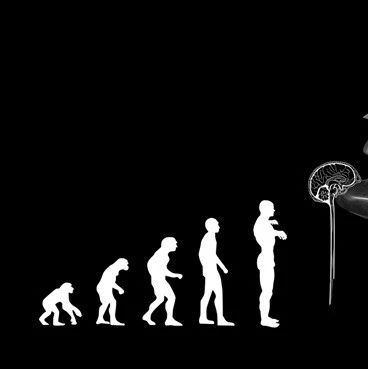导读:科学家已研发出一种疫苗,它可以在癌症患者体内“巡视”并摧毁肿瘤细胞。该疗法的靶点分子存在于90%的肿瘤细胞中,通过广泛地注射病人体内让其免疫系统对抗常见的癌症,包括乳腺癌和前列腺癌。

科学家已研发出一种疫苗,它可以在癌症患者体内“巡视”并摧毁肿瘤细胞。
科学家已研发出一种疫苗,它可以在癌症患者体内“巡视”并摧毁肿瘤细胞。
该疗法的靶点分子存在于90%的肿瘤细胞中,通过广泛地注射病人体内让其免疫系统对抗常见的癌症,包括乳腺癌和前列腺癌。早期临床实验中的初步结果表明,疫苗可以引起患者的免疫反应并改善癌症的病情。
科学家希望,通过更大规模的试验能够证实这种疫苗对多种肿瘤有效。他们相信:“如果肿瘤患者被诊断的时期足够早,或者接受手术后防止病情反复和扩散,该疫苗能够用于治疗小型肿瘤。”
癌细胞通常能逃避免疫系统的“侦查”,因为它不被视为一种威胁。免疫系统会攻击外源细胞,如细菌,由于肿瘤细胞形似于患者体内功能丧失的体细胞,所以能幸免于难。
然而,科学家们发现:“一种MUC1分子大量存在于癌细胞表面,能够协助免疫系统检测肿瘤细胞。”
Vaxil Biotheraputics药物公司和特拉维夫大学的研究人员一起研制出新疫苗——MUC1分子片段向免疫系统提供线索,以便其能识别和摧毁癌细胞。
Vaxil Biotheraputics药物公司声明:“ImMucin能够引起所用病人出现强效、特异性的免疫应答,仅2-4次剂量注射后检测出患者的免疫反应(最多用了12剂量)。对于一些患者,临床的疗效初步呈现。”
相关结果有待正式公布,如果进一步试验成功的话,这一疫苗有望6年内面世。作为治疗性疫苗,它的设计初衷是帮助肿瘤患者克服该疾病,而不是的预防肿瘤的发生。
癌细胞含有高水平的MUC1分子,它被认为能够协助肿瘤生长。正常的人体细胞也含有该分子,考虑其含量较低,即便接种疫苗也不会触发免疫应答。
耶路撒冷地区哈达萨医疗中心开展一项安全性试验,10位患有多发性骨髓瘤(一种血癌类型)的病人已接受疫苗注射,7位病人目前完成治疗,Vaxil称:“相比疫苗注射前,所用的病人都具有较强的免疫反应以对付肿瘤细胞。”
Vaxil补充道:“接受治疗后,3位病人的肿瘤已经消失。”
这项研究结果发表在《疫苗》Vaccine 期刊上,该疗法能诱使小鼠免疫功能变得强大,进而提高小鼠应对肿瘤的存活能力。
Kat Arney博士是英国癌症研究中心的科学信息管理员,他说:“世界范围内,多个研究小组正在研制针对MUC1的疗法,它已成为多种肿瘤类型的靶点。”

 ImMucin: A novel therapeutic vaccine with promiscuous MHC binding for the treatment of MUC1-expressing tumors
ImMucin: A novel therapeutic vaccine with promiscuous MHC binding for the treatment of MUC1-expressing tumors
Riva Kovjazina, Ilan Volovitzb, Yulia Kundelc, Eli Rosenbaumc, Gal Medaliac, Galit Horne, Nechama I. Smorodinskye, Baruch Brennerc, d, Lior Carmona
An optimal cancer vaccine should be able to induce highly potent, long-lasting, tumor-specific responses in the majority of the cancer patient population. One approach for achieving this is to use synthetic peptide vaccines derived from widely expressed tumor-associated antigens, that promiscuously bind multiple MHC class I and class II alleles. MUC1-SP-L (ImMucin, VXL100) is a 21mer peptide encoding the complete signal peptide domain of MUC1, a tumor-associated antigen expressed by over 90% of solid and non-solid tumors. MUC1-SP-L was predicted in silico to bind various MHC class I and MHC class II alleles, covering the majority of the Caucasian population. PBLs obtained from 13 naïve donors all proliferated, with a Stimulation Index (SI ≥ 2), to the MUC1-SP-L peptide, producing mixed CD4+ and CD8+ responses. Similar results were manifested by MUC1-SP-L in PBLs derived from 9 of 10 cancer patients with MUC1 positive tumors. CD4+ and CD8+ T cell populations exhibited CD45RO memory markers and secreted IFN-gamma and IL-2 following stimulation with MUC1-SP-L. These T cells also exhibited proliferation to the MUC1-SP-L inner 9mer epitopes and cytotoxicity against tumor cell lines expressing MUC1 and a concordant MHC class I allele. Cytotoxicity to MUC1-expressing human and murine tumors was shown also in T cells obtained from HLA-A2 transgenic mice and BALB/c syngeneic mice immunized with the MUC1-SP-L and GM-CSF. In an immunotherapy model, BALB/c mice inoculated with metastatic MUC1 transfected murine DA3 mammary tumor cells, exhibited significantly prolonged survival following vaccination with MUC1-SP-L. Our results indicate superior immunological and anti-tumor properties of MUC1-SP-L compared to previously published MUC1-derived epitopes.
文献链接:https://www.sciencedirect.com/science/article/pii/S0264410X1100658X







